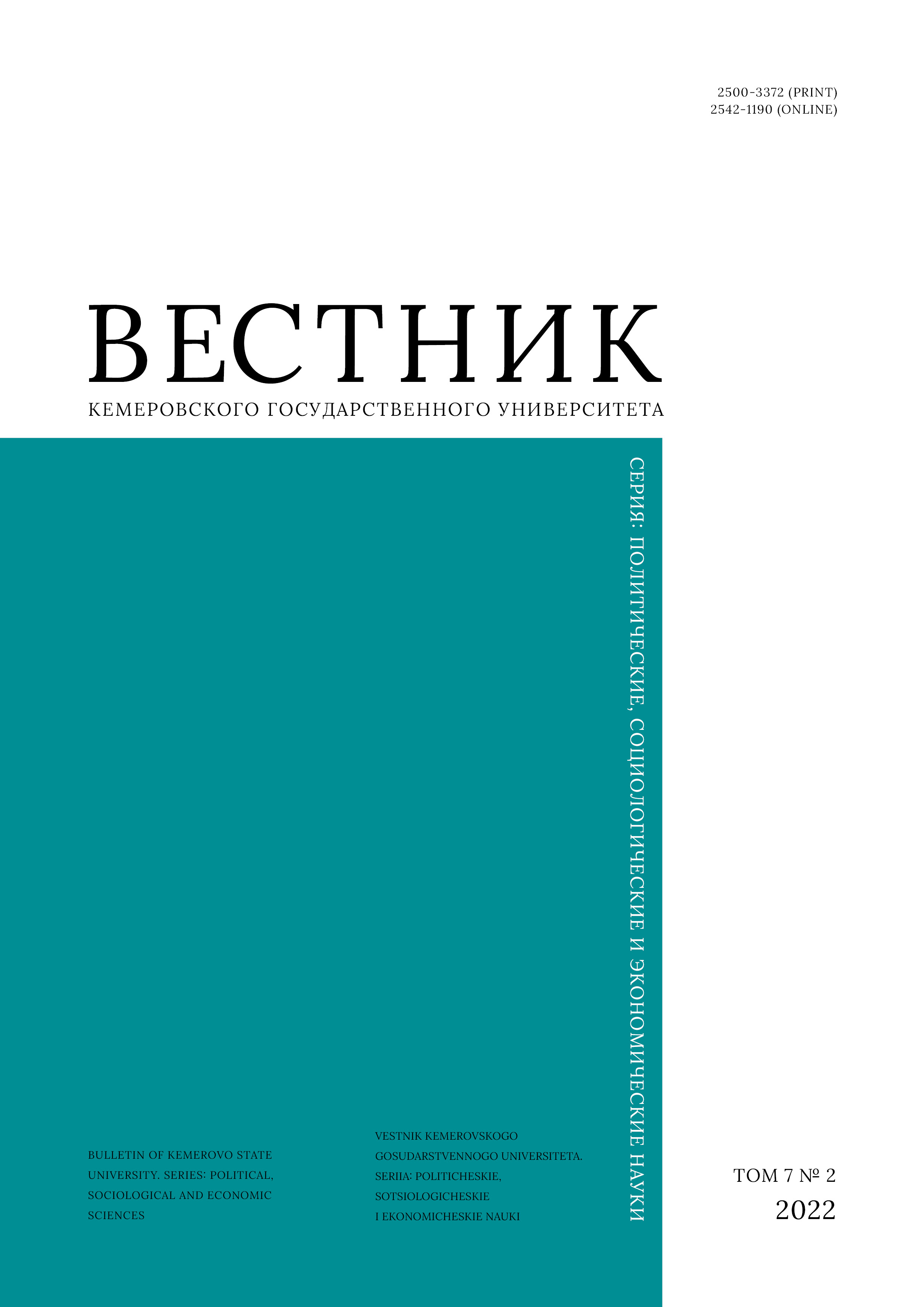Sochi, Russian Federation
The article introduces theoretical foundations for regional tourist flows segmentation. It is a management tool that distributes, attracts, and restrains tourist traffic. The research objective was to develop some methodological recommendations for segmentation of regional tourist flows based on goals and attributes. The study involved domestic and foreign research publications, materials of the World Tourism Organization, specialized dictionaries and encyclopedias, methods for calculating inbound and outbound tourist flows, legal documents on segmentation, etc. The list of research methods included comparison, analysis, synthesis, system and complex approach, tabular method, graphic modeling, etc. The obtained results were represented as algorithms for analysis and segmentation of regional tourist flows, which can be used in the theory and practice of tourism, in federal, regional, and local tourism management, in tourism education, etc. The authors believe that segmentation of regional tourist traffic produces targeted tourist products, replenishes local budgets, ensures sustainable development of recreational areas, and prevents negative consequences of tourism development.
regional tourist flow, segmentation, segmentation objective, segmentation attributes, tourism market segmentation, subject of segmentation, object of segmentation
1. Kotler P. Marketing Essentials. Englewood Cliffs, N.J.: Prentice-Hall, 1984, XIX+556.
2. Petermann Th., von Hutter Ch., Wennrich Ch. Folgen des Tourismus. Bd. 2: Tourismuspolitik im Zeitalter der Globalisierung. Berlin: Ed. Sigma, 1999, 278.
3. Swarbrooke J., Horner S. The impacts of business travel and tourism. Business Travel and Tourism, eds. Swarbrooke J., Horner S. London: Routledge, 2001, 75-87.
4. Cole D. N. Environmental impacts of outdoor recreation in wildlands. Society and resource management: a summary of knowledge, eds. Vaske J. J., Bruyere B. L., Field D. R., Brown P. J. Jefferson City, MO: Modern Lithograph, 2004, 107-116.
5. Xia J. C., Zeephongsekul P., Packer D. Spatial and temporal modelling of tourist movements using Semi-Markov processes. Tourism Management, 2011, 32(4): 844-851. https://doi.org/10.1016/j.tourman.2010.07.009
6. Zhusheng L. Tourist flow-control study based on utility. Computer Modelling & New Technologies, 2014, 18(2): 205-211.
7. Bigné E., Gnoth J., Andreu L. Advanced topics in tourism market segmentation. Tourism management: analysis, behaviour and strategy, eds. Woodside A. G., Martin D. CABI, 2007, 151-173. https://doi.org/10.1079/9781845933234.0151
8. Pustovoytenko S. I., Sarian A. A. Problems in tourism terminology. Rossiiskoe predprinimatelstvo, 2012, (7): 131-138. (In Russ.)
9. Kartashevskaya I. F. Tourist flows as a managed category of the base model of the recreation system. Kultura narodov Prichernomoriia, 2005, (63): 53-57. (In Russ.)
10. Zagurskaya S. G. Marketing in social and cultural services and tourism. Moscow: MIIT, 2011, 195. (In Russ.)
11. Lisitsyna T. B., Korzhanova A. A. Market segmentation in tourism. Implementation of innovative development results: problems and prospects: Proc. Intern. Sci.-Prac. Conf., Sterlitamak, 13 Aug 2018. Ufa: AMI, 2018, 9-13. (In Russ.)
12. Oganesyan L. L., Fomenko E. V. Problems of applying a diversification strategy in developing the region's tourism product. Kurorty. Servis. Turizm, 2014, (1): 129-141. (In Russ.)
13. Katsoni V., Giaoutzi M., Nijkamp P. Market segmentation in tourism: an operational assessment framework. Quantitative methods in tourism economic, eds. Matias Á., Nijkamp P., Sarmento M. Heidelberg: Physica, 2013. https://doi.org/10.1007/978-3-7908-2879-5_18
14. Aleksandrova A. Y., Shipugina M. V. International tourism as a geopolitical force. Moscow-Berlin: Direkt-Media, 2020, 99. (In Russ.). https://doi.org/10.23681/597731
15. Phuong N., Song N., Quang T. Factors affecting community-based tourism development and environmental protection: practical study in Vietnam. Journal of Environmental Protection, 2020, 11(2): 124-151. https://doi.org/10.4236/jep.2020.112009
16. Shafaei F., Mohamed B. A stage-based model development study on tourism social impact assessment. International Journal of Scientific and Research Publications, 2015, 5(3). Available at: http://www.ijsrp.org/research-paper-0315.php?rp=P393777 (accessed 23 Sep 2021).
17. Freyer W. Tourismus: Einführung in die Fremdenverkehrsökonomie (Lehr- und Handbücher zu Tourismus, Verkehr und Freizeit). 11th revised and updated ed. De Gruyter Oldenbourg, 2015, 730.
18. Donskova L. I. The research of social tourism by foreign authors: theory and practice. Nauka i turizm: Strategii vzaimodeistviia, 2018, (8): 47-55. (In Russ.)
19. Bahrmann M. Die CHAID-Analyse als neue Methode der Marktsegmentierung im Tourismus Multivariate Zielgruppendifferenzierung am Beispiel Rheinland-Pfalz. Vom Fachbereich VI. (Geographie/Geowissenschaften) der Universität Trier zur Verleihung des akademischen Grades Doktor der Philosophie (Dr. phil.). Trier, 2002, 272.
20. Kislova Yu., Kazunina A. Methodology assessing the tourist flows to the territory of Moscow. Logistics, 2016, (12): 18-29. (In Russ.)
21. Aigina E. V. Overtourism and tourismophobia: new phenomena or old problems? Sovremennye problemy servisa i turizma, 2018, (4): 41-55. (In Russ.) https://doi.org/10.24411/1995-0411-2018-10404
22. Kharlamov S. V. Analysis of spatial and temporal features of the regional tourist flow in the Altai Territory. Polzunovskii almanakh, 2011, (3): 128-133. (In Russ.)
23. Saleeva T. V., Samoylenko A. A. Perfection of statistical accounting in tourism as a necessary condition for objective planning of social and economic development of the region (on the example of the Krasnodar Territory). Kurorty. Servis. Turizm, 2018, (2): 30-36. (In Russ.)
24. Kotova A. S., Starkova N. O. Features of statistical accounting in tourism. Prioritetnye nauchnye napravleniia: ot teorii k praktike, 2016, (32-2): 105-110. (In Russ.)
25. Kochetygova O. V. Methodology for statistical estimation of the number of tourists who did not use the services of collective accommodation facilities. Saratov region - 80 years: history, development experience, growth prospects: Proc. Intern. Sci.-Prac. Conf., Saratov, 11 Apr 2016. Saratov: Saratov Socio-Economic Institute (branch) Plekhanov Russian University of Economics, 2016, pt. 2, 95-97. (In Russ.)
26. Kuzenkova V. O. Algorithm for calculating the incoming tourist flow into Smolensk region. Servis v Rossii i za rubezhom, 2012, (8): 61-67. (In Russ.)
27. Gribkov-Mayskiy V. M. Tourism statistics or how to calculate the tourist flow? Servis v Rossii i za rubezhom, 2016, 10(8): 168-170. (In Russ.)

















